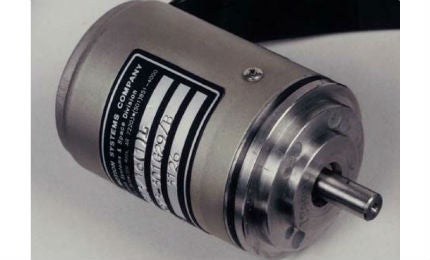

MicroSeries® Encoders are ultra small, absolute, optical shaft encoders. They have substantially better accuracy than other shaft angle digitisers. MicroSeries® Encoders are designed for applications where small size, medium resolution and insensitivity to power interruptions are desired. The LSI MicroSeries® was introduced to significantly reduce the size of the encoder, lower the cost, and provide a more versatile electrical interface.
The basic model in the LSI MicroSeries® family is designated L. In this model, the outputs are three-state and can interface directly with a microprocessor. The microprocessor demultiplexes the signals and converts them to natural binary code. The microprocessor can be provided by the user, or by BEI. For those applications where a microprocessor is not available or suitable, BEI offers a MicroSeries® Digital Decoder. The MicroSeries® Digital Decoder is a custom, monolithic gate array which can be separate (LS Models) or can be contained within the encoder package (LC models).
The L model is the basic encoder configuration which outputs a four-wire multiplexed, three-state logic level, MicroSeries® Code Word. The encoder is addressed by three enable lines activated in a controlled sequence. This model is intended for direct interface with a user (or BEI) furnished microprocessor where the microprocessor can be programmed to perform the encoder’s digital logic functions. For programming details, request BEI Technical Bulletin "LSI MicroSeries® Encoders – Principles of Operation/Microprocessor Control and Decoding."

